6 Water-Wise Perennials for Blazing High-Altitude Summers
Keep your garden colorful and your soul refreshed during the long, hot days of summer with the beautiful blooms of these tough perennials. Gardening at high elevations — altitudes of 5,000 feet or more — presents a unique set of challenges. The intense glare and heat of high-altitude sunlight, lean soils, sparse rainfall and low humidity can intimidate any gardener. The key is to focus on native plants and those that are well adapted to these difficult growing conditions.
The collection of plants presented here offers many weeks of showy flowers with little care or water, once their root systems are established. They are particularly well suited to hot zones in the landscape — gardens located against south- or west-facing building foundations or walls, adjacent to driveways and sidewalks, or in the narrow strip beside the street.
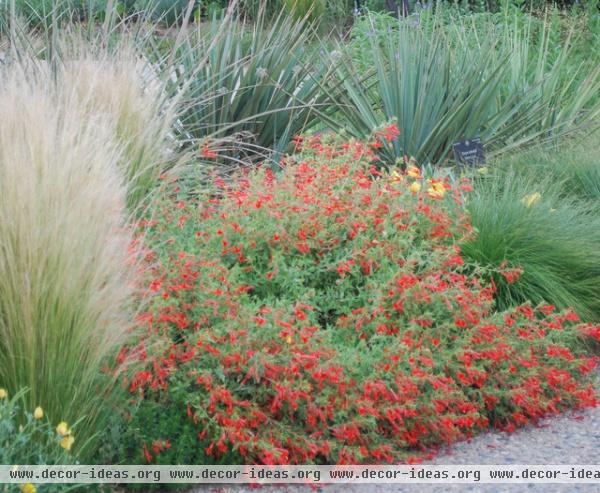
Creeping Hummingbird Trumpet
(Zauschneria garrettii)
Vibrant orange-red trumpet-shaped flowers create a mass of color for weeks on end. A true ground cover and an incredible hummingbird magnet, it spreads to form a living mulch. Let it drape over retaining walls or among large boulders. Plant this bold flower with blue or purple ones for even more punch.
Globe thistle (Echinops ritro), blue oat grass (Helictotrichon sempervirens) and lavender (lavandula spp) would all be good companions for creeping hummingbird trumpet. It prefers a moderately enriched, well-drained garden soil but will tolerate (and spread less vigorously in) a lean soil. It's deer resistant.
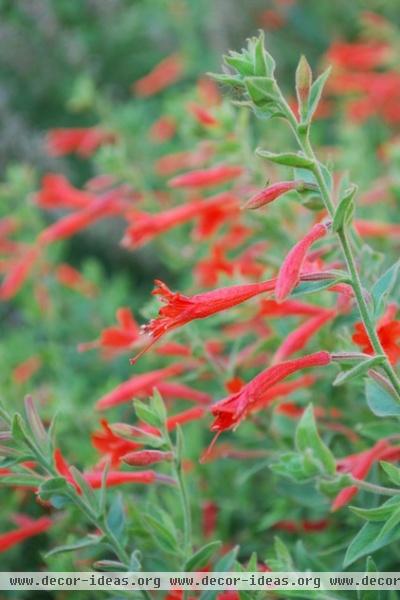
Where it will grow: Hardy to -20 degrees Fahrenheit (USDA zones 5 to 9; find your zone); elevations up to 8,000 feet
Water requirement: Low
Light requirement: Full sun; afternoon shade at lower elevations
Mature size: 4 to 6 inches tall and 18 inches wide
Seasonal interest: Blooms July through August
When to plant: Spring
Read about a taller species of Zauschneria
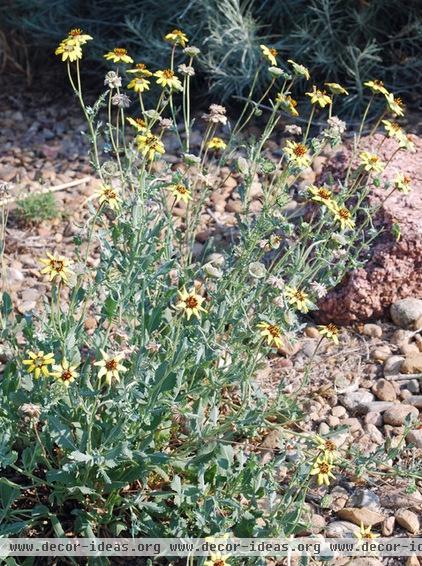
Chocolate Flower
(Berlandiera lyrata)
Who can resist chocolate? You can keep your diet on track by forgoing the candy and enjoying the sweet treat of fragrance from these flowers instead.
Bright yellow petals surround a mahogany-red center atop an open, sprawling form. This native perennial is best used in small groups or masses in a prairie or wildflower garden.
Place it near stones or paving — the surface warmth will enhance the flowers' aroma. Pair it with ice plant (Delosperma spp), dwarf Russian sage (Perovskia atriplicifolia 'Little Spire') and Parry's century plant (Agave parryi). Chocolate flower appreciates poor, dry soil. It's deer resistant.
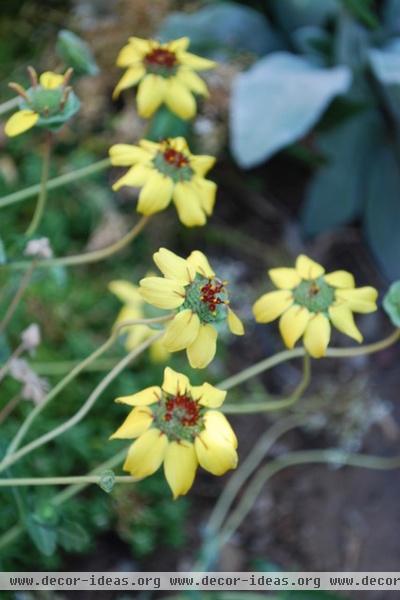
Where it will grow: Hardy to -30 degrees Fahrenheit (zones 4 to 9); elevations up to 7,000 feet
Water requirement: Low
Light requirement: Full sun
Mature size: 12 to 18 inches tall and 18 to 24 inches wide
Seasonal interest: Flowers June to September
When to plant: Spring or fall
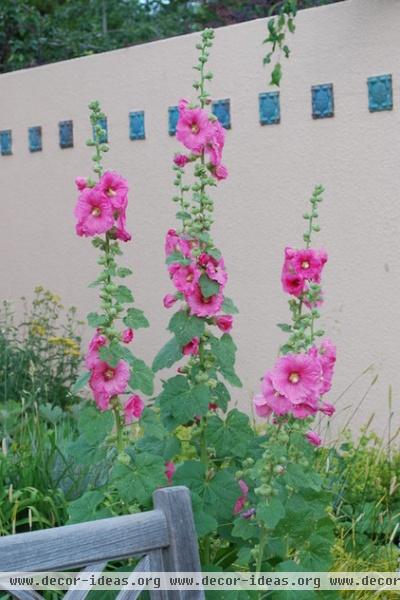
Hollyhock
(Alcea rosea)
This old-fashioned favorite sports 5- to 6-foot-tall spikes packed with large (4-inch-diameter) flowers in yellow, red, pink or white. The blooms attract both hummingbirds and butterflies.
Hollyhock is a short-lived perennial or biennial and will self-sow (without being weedy) if the flowers are allowed to ripen and set seed.
It's a graceful addition to a wildflower garden, meadow or mixed border. Combine it with lady's mantle (Alchemilla mollis), bearded iris (Iris germanica) and tall sedum (Sedum spectabile). Provide well-drained, average to lean soil.
Where it will grow: Hardy to -40 degrees Fahrenheit (zones 3 to 8); elevations up to 8,000 feet
Water requirement: Moderate to low
Light requirement: Full sun
Mature size: 2 to 3 feet wide and 5 to 6 feet tall
Seasonal interest: Blooms July to August
When to plant: Spring or fall
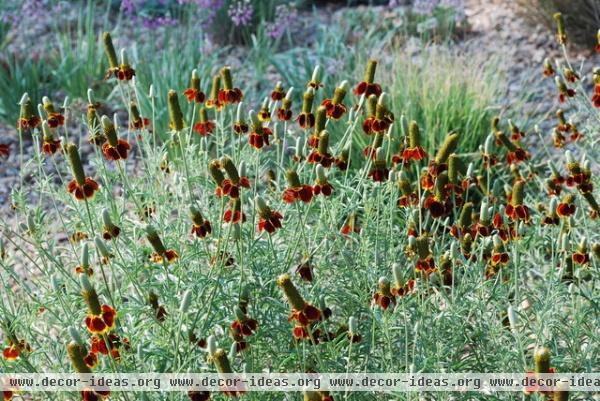
Prairie Red Coneflower
(Ratibida columnifera pulcherrima)
Deep red flowers that dance atop long, slender stems and delicate, airy foliage make prairie red coneflower a terrific addition to a xeric mixed border or wildflower garden. Prairie red coneflower, also known as Mexican hat, is native to a large region of western North America. It's an important nectar source for native bees, butterflies and other insects.
Plant it with Western gayfeather (Liatris punctata), wild four o'clock (Mirabilis multiflorus) and Missouri evening primrose (Oenothera macrocarpa). Although it is a short-lived perennial (two or three years), it will reseed readily. Plant it in well-drained clay to sandy soil.
Where it will grow: Hardy to -30 degrees Fahrenheit (zones 4 to 10); elevations up to 8,000 feet
Water requirement: Very low, but will tolerate moist soil
Light requirement: Full sun
Mature size: 18 to 24 inches tall and wide
Seasonal interest: Blooms late June to August
When to plant: Spring or fall
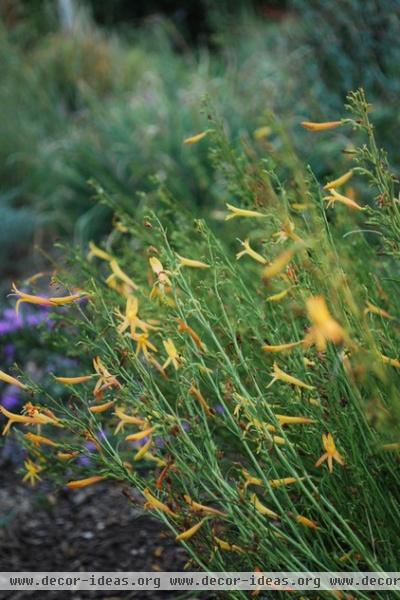
Yellow Pineleaf Penstemon
(Penstemon pinifolius 'Mersea Yellow')
A long-lived, native penstemon that blooms nonstop, has evergreen foliage and is rabbit resistant — what more could you want? Use pineleaf penstemon as a low edging plant for a shrub border or in drifts with blanket flower (Gallardia spp), red yucca (Hesperaloe parvifolia) and 'Terracotta' yarrow. Well-drained soil with low fertility is ideal for this penstemon.
Where it will grow: Hardy to -30 degrees Fahrenheit (zones 4 to 9); elevations up to 8,000 feet
Water requirement: Low
Light requirement: Full to partial sun
Mature size: 12 inches tall and 15 inches wide
Seasonal interest: Blooms late June to July
When to plant: Spring or fall
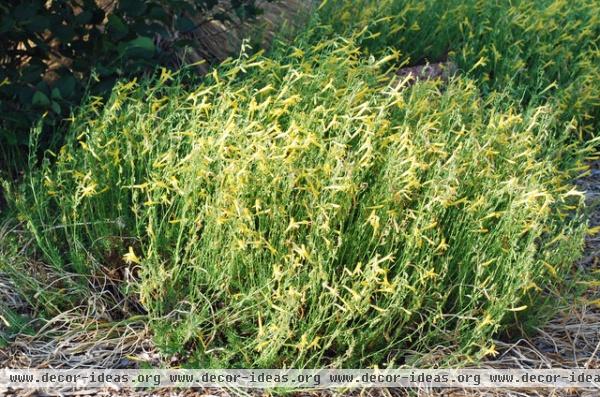
Here's a zoomed-out look at yellow pineleaf penstemon.
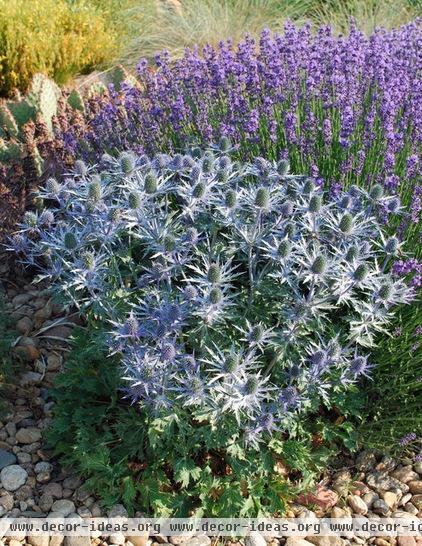
Big Blue Sea Holly
(Eryngium 'Big Blue')
Every garden needs some architectural plants — those that are stiff and sculptural — to contrast those that are soft and billowy. Big blue sea holly may be just what you've been looking for. Stiff blue stems with a 4-inch diameter and spiny, blue bracts create a unique metallic appearance.
Sea holly is deer and rabbit resistant, but attractive to butterflies. Include it in a cutting garden, as it is excellent for both fresh and dried arrangements. Pair big blue sea holly with lavender (Lavandula spp), as shown, plus whirling butterflies (Gaura lindheimeri) and ornamental grasses. It adapts to average, clay and even sandy soils.
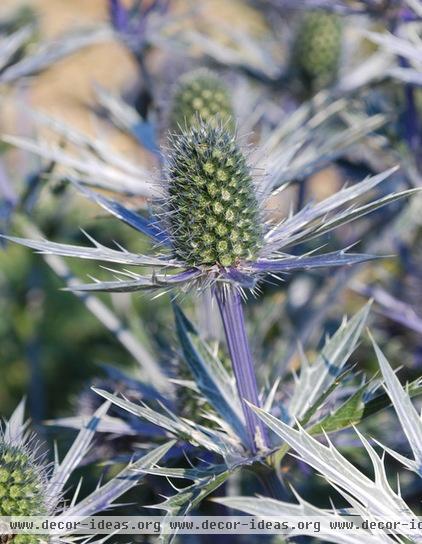
Where it will grow: Hardy to -30 degrees Fahrenheit (zones 4 to 9); elevations up to 7,500 feet
Water requirement: Low (but water well the first year to establish it)
Light requirement: Full sun
Mature size: 30 inches tall and 18 inches wide
Seasonal interest: Blooms July to August
When to plant: Spring or fall
More guides for your best summer garden












